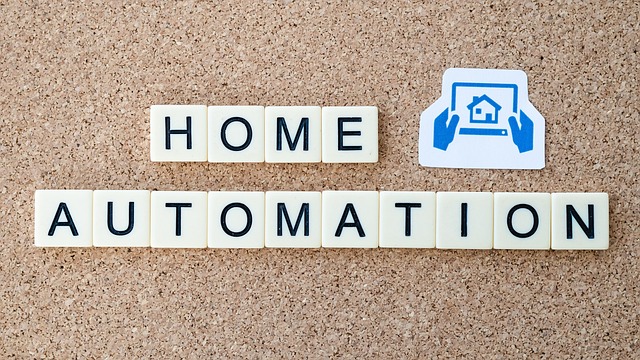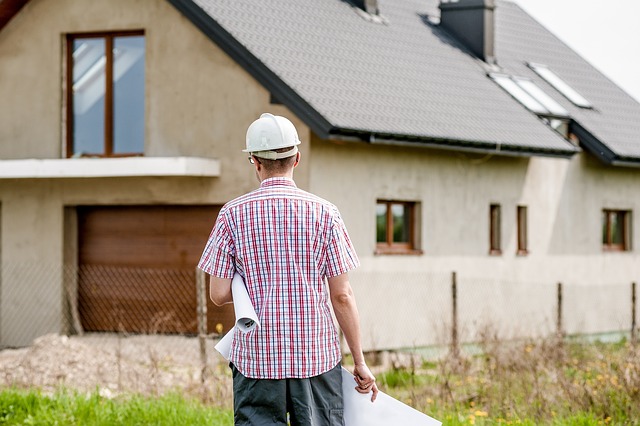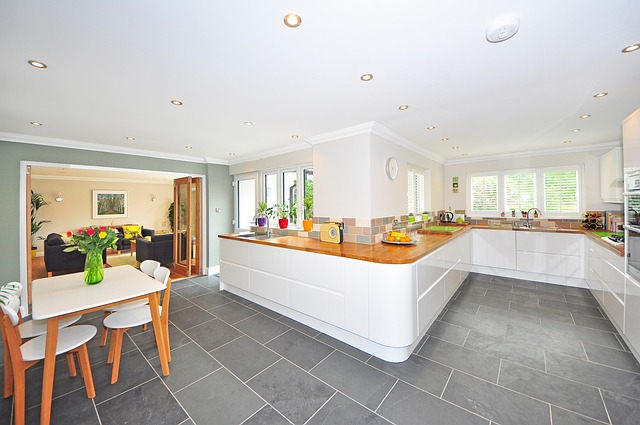Green security systems for homes now offer dual benefits by providing enhanced protection alongside reduced carbon footprints through energy-efficient technologies such as solar-powered surveillance cameras and motion-activated LED lighting. These eco-friendly systems minimize traditional energy consumption and emissions associated with security measures. By integrating smart home technology, homeowners can remotely monitor and control their homes for optimal energy efficiency, aligning with sustainable living practices while achieving long-term cost savings. The use of biodegradable materials and recycled components in security systems further supports environmental conservation efforts. Homeowners who opt for solar-powered surveillance cameras reduce reliance on traditional power sources, ensuring continuous operation during outages, and enjoy the dual advantages of reliable security and sustainability. Additionally, smart energy management within these systems allows for intelligent automation that adjusts to user habits, conserving energy and contributing to global efforts to transition away from non-renewable energy sources. These integrated approaches represent a meaningful contribution to environmental conservation and embody a commitment to sustainable practices in home security.
Reducing your carbon footprint can significantly impact the environment, and one surprising avenue for change lies within the realm of home security. This article explores how integrating green technology into your security systems not only fortifies your home against potential threats but also promotes sustainability. We’ll delve into understanding your environmental impact, the benefits of eco-conscious home security solutions, and the specifics of solar-powered surveillance cameras. Additionally, we’ll examine how to incorporate smart energy management into your system for a dual benefit: enhanced safety and energy conservation. Embrace the intersection of home security and green living, and learn how to protect your property while protecting the planet.
- Understanding Your Carbon Footprint and Its Impact on the Environment
- The Role of Green Technology in Home Security Systems
- Eco-Friendly Home Security Solutions to Consider
- Solar-Powered Surveillance Cameras: A Sustainable Choice for Home Protection
- Integrating Smart Energy Management with Your Home Security System
Understanding Your Carbon Footprint and Its Impact on the Environment

In today’s climate-conscious world, homeowners are increasingly seeking ways to reduce their carbon footprint. One effective approach is integrating green security systems into their homes. These systems not only safeguard your property but also contribute to environmental sustainability by minimizing energy consumption and emissions associated with traditional security measures. Understanding your carbon footprint begins with recognizing the greenhouse gas emissions directly or indirectly linked to your daily activities, including energy use for heating, cooling, and powering devices. By adopting eco-friendly practices and technologies within your home security setup, you can significantly lower this environmental impact. For instance, motion-activated LED lighting as part of a green security system illuminates only when necessary, reducing electricity usage compared to conventional lighting systems that operate on a constant basis. Similarly, solar-powered surveillance cameras offer a renewable energy source while providing continuous monitoring of your premises, thereby aligning home security with sustainable living practices.
Moreover, the integration of smart home technology into green security systems allows for remote monitoring and control, which can lead to more efficient energy management. Homeowners can schedule lighting and security systems to activate only when needed, optimizing energy use and contributing to a smaller carbon footprint. This proactive approach to energy consumption not only benefits the environment but also results in cost savings over time. By embracing green technologies within your home security infrastructure, you are taking a significant step towards sustainable living, ensuring that your efforts contribute positively to global environmental conservation efforts.
The Role of Green Technology in Home Security Systems

Incorporating green technology into home security systems has become a pivotal aspect of modern home protection, offering both environmental and economic benefits. These advanced systems utilize renewable energy sources such as solar power to operate, significantly reducing their carbon footprint while ensuring continuous functionality during power outages. The integration of motion-activated lighting and energy-efficient sensors not only deters potential intruders but also minimizes energy consumption. Moreover, these smart security solutions often come with remote access capabilities, allowing homeowners to monitor and control their systems from anywhere, thus enhancing both safety and sustainability.
The role of green technology in home security extends beyond environmental considerations to encompass a comprehensive approach to safety and efficiency. Smart thermostats within these systems can adjust the home’s climate to optimize energy use while maintaining a comfortable living environment. Similarly, automated lighting systems can adapt to occupancy and natural light availability, further reducing energy waste. These eco-friendly features contribute to a reduced carbon footprint, aligning with the global effort to combat climate change, all while providing robust security measures for homeowners.
Eco-Friendly Home Security Solutions to Consider

Incorporating eco-friendly measures into your home security system can significantly reduce your carbon footprint while safeguarding your property. Opting for solar-powered surveillance cameras not only harnesses renewable energy but also eliminates the need for frequent battery changes and reduces reliance on grid electricity. These cameras are robust, often with motion-activated recording capabilities, ensuring they activate only when necessary, thus conserving power. Similarly, smart home security systems that integrate energy-efficient lighting solutions can illuminate your home’s perimeter without incurring substantial energy costs or environmental impact. Advanced systems offer remote access and monitoring through mobile apps, which lessens the need for physical patrols and the associated carbon emissions.
Another aspect to consider is the use of biodegradable security materials and recycled components in your home security system. Biodegradable signage and alarms can have a smaller environmental footprint compared to traditional plastic or metal alternatives. Moreover, choosing a security provider that prioritizes green practices, such as carbon offsetting for their operations, aligns with your commitment to sustainability. By evaluating the eco-friendliness of each component within your home security system, you can create a secure environment that also supports environmental conservation efforts.
Solar-Powered Surveillance Cameras: A Sustainable Choice for Home Protection

Solar-powered surveillance cameras represent a forward-thinking approach to home security, harmonizing the need for vigilant protection with eco-friendly practices. By leveraging renewable solar energy, these systems eliminate the reliance on conventional electricity sources, thereby reducing your carbon footprint and promoting sustainability. The initial investment in solar panels is offset by years of energy savings, making them a cost-effective solution over time. Moreover, the integration of solar technology in home security not only contributes to environmental conservation but also ensures that your home remains secure even during power outages, providing uninterrupted surveillance.
Incorporating solar-powered cameras into your home security system is not only beneficial for the environment but also enhances functionality and reliability. These devices are typically low maintenance, as they require no frequent battery replacements or electrical wiring adjustments. The high-definition footage captured by these cameras can be accessed remotely, allowing you to monitor your property in real time from any location. This seamless combination of green technology with cutting-edge security features offers peace of mind, knowing that your home is both protected and contributing positively to the planet’s well-being.
Integrating Smart Energy Management with Your Home Security System

Incorporating smart energy management into your home security system can significantly reduce your carbon footprint while enhancing your property’s safety and efficiency. Advanced home security systems now offer integrated energy management solutions that not only protect your home from intruders but also optimize energy usage. By leveraging smart technology, these systems can learn your daily habits and adjust settings accordingly, ensuring lights and appliances are only in use when necessary. This dual functionality means you can save on energy costs while contributing to a greener planet, all monitored and managed remotely through an intuitive app. Moreover, motion-activated sensors can not only alert you to unexpected activity but also deactivate devices or lighting when rooms are unoccupied, further conserving energy. This integration represents a prudent step towards sustainable living, aligning home security with environmental stewardship.
The benefits of smart energy management within a home security system extend beyond cost savings and environmental responsibility. These systems can provide detailed analytics on energy consumption patterns, allowing homeowners to make informed decisions about their energy use. Additionally, they can be programmed to work in tandem with renewable energy sources, like solar panels, to maximize efficiency. The seamless operation between these systems contributes to a reduction in reliance on non-renewable energy sources, which is critical for sustainability efforts. By adopting such smart home technologies, homeowners can play an active role in the global shift towards more sustainable living practices.
In concluding our discussion on reducing one’s carbon footprint, it’s clear that integrating green technology into home security systems presents a compelling solution. By embracing eco-friendly options such as solar-powered surveillance cameras and smart energy management within your security infrastructure, you not only enhance the safety of your home but also contribute positively to environmental conservation. The shift towards sustainable practices in home security is both a responsible choice for individual households and a collective effort towards a greener future. Homeowners are increasingly recognizing the dual benefits of these systems: protecting their property while preserving our planet. As we move forward, it’s imperative to continue advocating for and investing in such innovative, environmentally conscious technologies that align with the broader goals of sustainability.
